B92
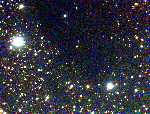 |
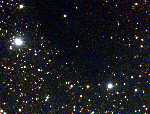 |
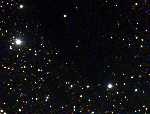 |
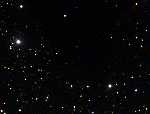 |
| Imax=5 | Imax=10 | Imax=20 | Imax=50 |
157 exposures, 10s each 7/4/10 San Jose, CA
This dark nebula borders the 'small Sagittarius star cloud'. This image was taken a few miles south of San Jose. The sky conditions were such that the Milky Way in Sagittarius could be seen, but there was substantial sky glow. Under these conditions B92 was difficult to find, and it took many comparisons between acquired images and reference photographs to be sure of it. There was also substantial wind, so many images had to be discarded. Pluto is also in this image, as discussed here.
Pluto
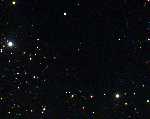 |
| Imax=50 |
13 frames, 10 minute intervals 7/4/10 San Jose, CA
Click the image above to view an animated GIF movie of Pluto. This animation shows Pluto (slightly above center) appearing to move relative to the background stars in the dark nebula B92. There are 13 frames with approximately 10-minute intervals between them. Each frame was generated from many 10s exposures, combined in the ususal way. There is also some field rotation, suggesting bad polar alignment of the equatorial mount. Since Pluto was close to opposition (Pluto is in the opposite direction as the Sun), the apparent motion is mainly a parallax effect due to Earth's motion (Pluto's orbital period is ~248 years, but its actual velocity relative to the Sun is ~1/6 that of Earth's). By measuring the apparent motion of Pluto relative to the background stars, I estimated the radius of Pluto's orbit to be 34 astronomical units (34 times the Earth-Sun distance). Pluto's actual orbit is rather elliptical, but its distance from the Sun in 2010 is approximately 31.85 a.u. (RASC Observer's Handbook). For an explanation of this calculation, click here..
S Cephei
 |
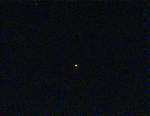 |
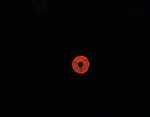 |
| Imax=75000 | Imax=1000 | defocused |
93 exposures, 0.2s each 7/10/10 Adin, CA
This star in Cepheus is of spectral class N, and has a rather striking red-orange color, much more so than stars like Betelgeuse and Antares. In the image on the right, the star is defocused to allow its color to be more easily displayed (the black circle in the middle is the shadow of the secondary mirror).
NGC 7000 - North American Nebula
 |
 |
 |
 |
| Imax=5 | Imax=5 | Imax=10 | Imax=10 |
101 exposures, 30s each 7/10/10 Adin, CA
This is just a small portion of the North American Nebula in Cygnus. The area shown here is in the 'Southern Mexico' portion. Within each pair, the image on the right uses only the best frames, resulting in crisper stars but reduced signal-to-noise in the nebula.
Uranus
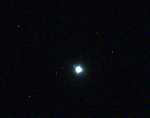 |
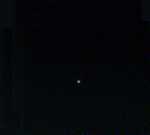 |
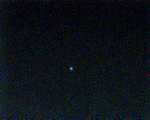 |
| Imax=75 | Imax=8000, 3X | Imax=15000, 3X |
10 exposures, 10s each 7/10/10 Adin, CA
The first image is with a relatively long exposure in an attempt to see the moons. Uranus has four moons of magnitude ~14: Ariel, Umbriel, Titania and Oberon. Their maximum angular separations from Uranus are 13.8, 19.2, 31.5, and 42.1 arc seconds, respectively (RASC Observer's Handbook). Only the speck closest to the planet has an angular separation small enough that it could be a moon. Near this speck is also a suspicious bump that may just be a diffraction artifact. The other two images are made from very short exposures and using a 3X Barlow lens. There was a lot of wind and turbulence, and only the best frames were kept.
NGC6543 - Cat's Eye Nebula
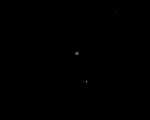 |
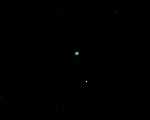 |
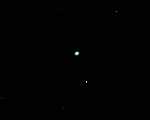 |
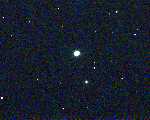 |
| Imax=1300 | Imax=800 | Imax=400 | Imax=20 |
61 exposures, 5s each 7/11/10 Adin, CA
This turned out to be very bright but small, with not much structure visible at this resolution.
NGC6207
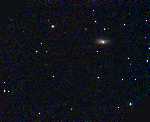 |
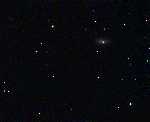 |
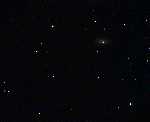 |
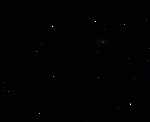 |
| Imax=10 | Imax=20 | Imax=30 | Imax=100 |
34 exposures, 30s each 7/11/10 Adin, CA
This galaxy is very close to M13, and was one of Kathy's picks.
NGC 281
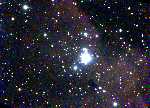 |
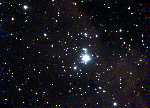 |
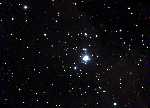 |
| Imax=5 | Imax=10 | Imax=20 |
54 exposures, 30s each 7/11/10 Adin, CA
Diffuse emission and dark nebula near η Cassiopeiae. Though faint, the nebulosity could at least be made out visually.
M87
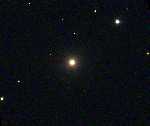 |
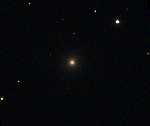 |
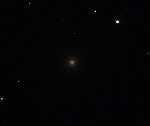 |
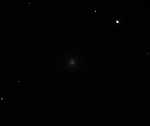 |
| Imax=20 | Imax=40 | Imax=80 | Imax=160 |
47 exposures, 15s each 7/12/10 Adin, CA
We found this well-known elliptical galaxy by accident while searching in the Virgo galaxy cluster. The feature at 4:00 is probably the jet, whose origin is thought to be a black hole near the center of the galaxy.
M64 - Black Eye Galaxy
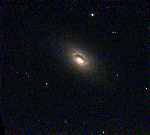 |
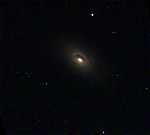 |
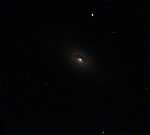 |
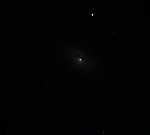 |
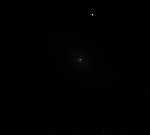 |
| Imax=15 | Imax=30 | Imax=60 | Imax=120 | Imax=240 |
52 exposures, 20s each 7/12/10 Adin, CA
I tried to spot the 'eye' visually, but I was not sure if I could see it. This is suprising considering how obvious it is in the photograph.
M11 - Wild Duck Cluster
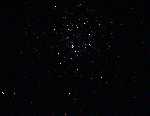 |
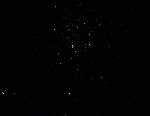 |
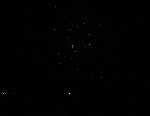 |
| Imax=400 | Imax=800 | Imax=1600 |
299 exposures, 1s each 7/12/10 Adin, CA
This was a beautiful object in the eyepiece. Unfortunately, the computer display does not have adequate dynamic range to give a fair impression. There is some interesting color variation among the stars, but it is difficult to see without zooming in on the image.
NGC 6888 - Crescent Nebula
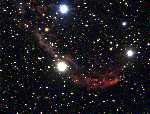 |
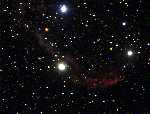 |
| Imax=10 | Imax=20 |
80 exposures, 20s each 7/12/10 Adin, CA
This image captures only the brightest portion of a large kidney-shaped object. The bright star near the top of this image is thought to be the source of the luminous gas.
Coma Berenices Galaxy Cluster
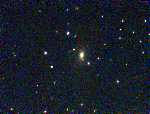 |
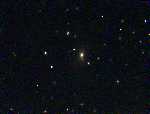 |
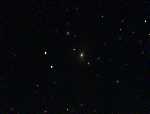 |
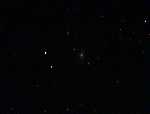 |
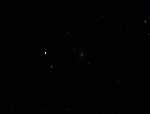 |
 |
| Imax=5 | Imax=10 | Imax=20 | Imax=40 | Imax=80 | Imax=10, circled |
106 exposures, 20s each 7/13/10 Adin, CA
This image is centered on NGC 4889, an elliptical galaxy that is the brightest in the Coma cluster. A majority of the objects in the image are galaxies, at a distance of ~300-400 million light years. The cluster contains ~1000 galaxies in total. In the right-most image, objects that are definitely galaxies are circled, based on material from Albert Highe's website.
M106
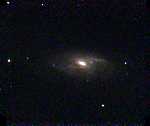 |
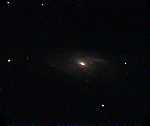 |
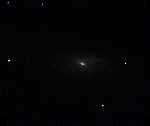 |
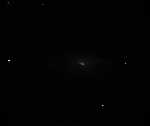 |
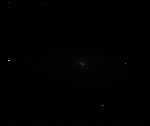 |
| Imax=15 | Imax=30 | Imax=60 | Imax=120 | Imax=240 |
38 exposures, 20s each 7/13/10 Adin, CA
This is a bright spiral galaxy in Canes Venatici.
NGC 7008
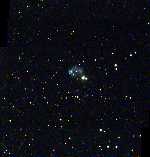 |
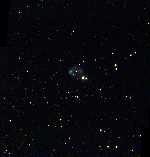 |
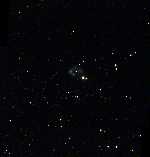 |
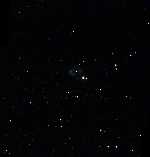 |
| Imax=20 | Imax=35 | Imax=50 | Imax=80 |
28 exposures, 20s each 7/13/10 Adin, CA
Another planetary with some interesting structure, one of Kathy's picks.
NGC 7129
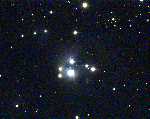 |
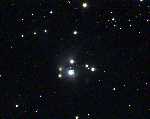 |
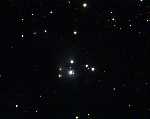 |
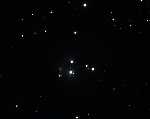 |
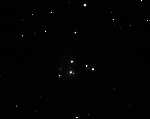 |
| Imax=7.5 | Imax=15 | Imax=30 | Imax=60 | Imax=120 |
61 exposures, 20s each 7/13/10 Adin, CA
This is an interesting reflection/emission nebula in Cepheus. Only the brightest parts can be seen clearly here.